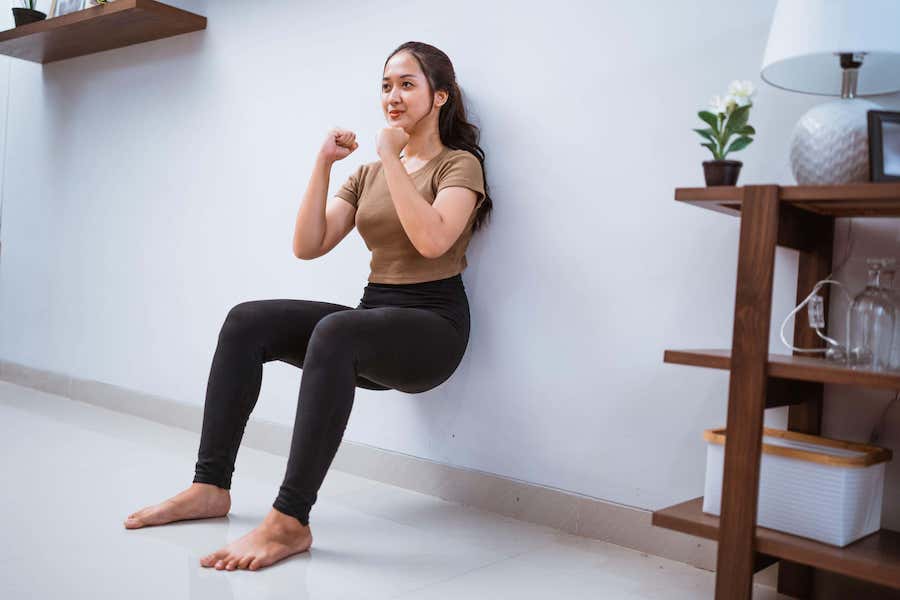Wall squat exercises can help lower blood pressure, study suggests
Some 270 studies were included in the final analysis which contained data on almost 16,000 people
Exercises such as “wall sits” could be the best form of activity to help people reduce blood pressure, a new study suggests.
Other physical activity including cardio, resistance training and HIIT workouts are also good for bringing down resting blood pressure levels, researchers found.
But isometric exercises – those that involve engaging muscles without movement, such as wall sits and planks – provide the best results, they said.
The study, published in the British Journal of Sports Medicine, saw researchers conduct analysis on previous studies looking at exercise and blood pressure.
Some 270 studies were included in the final analysis which contained data on almost 16,000 people.
They examined the impact different exercises had on systolic blood pressure, which notes the force at which the heart pumps blood around the body; and diastolic blood pressure, the resistance to the blood flow in the blood vessels between heartbeats when blood is pumped around the heart.
The researchers, led by academics at Canterbury Christ Church University in Kent, found that there were significant reductions in resting blood pressure following cardio (aerobic exercise); dynamic resistance training, such as squats, press-ups and weights; high intensity interval training (HIIT); and combined training and HIIT.
But the largest reductions were seen after isometric exercise training.
A secondary analysis on specific types of exercises found the most benefit was seen among those who performed “isometric wall squats” and among runners.
The academics said that current exercise recommendations for the prevention and treatment of high blood pressure are based on “older data” and suggest that it may be time to review the current guidelines.

Planks could also help bring down resting blood pressure levels, researchers found
“Aerobic exercise training, dynamic resistance training, combined training, high-intensity interval training and isometric exercise training are all significantly effective in reducing resting systolic and diastolic blood pressure,” they wrote.
“Overall, isometric exercise training is the most effective mode in reducing both systolic and diastolic blood pressure.
“These findings provide a comprehensive data driven framework to support the development of new exercise guideline recommendations for the prevention and treatment of arterial hypertension.”
For the average adult high blood pressure is considered to be from 140/90mmHg.
When a person’s blood pressure is too high it puts extra strain on blood vessels, heart and other organs, such as the brain, kidneys and eyes.
Persistent high blood pressure can lead to a number of serious health problems including heart attacks, strokes and vascular dementia.
While there are medications which can help, people can make a number of life-style changes to help bring their blood pressure down including regular exercise, losing weight, cutting back on caffeine, alcohol and salt.
The Press Association
Latest posts by The Press Association (see all)
- In Pictures: Party stalwart kept New Labour in touch with traditional supporters - November 21, 2024
- 6 easy indoor exercises to try this winter – and why they are good for you - November 19, 2024
- Martin Clunes: I can’t afford to retire – I’ve got too many horses - November 19, 2024
- How to avoid plant losses, flowering disappointments and container catastrophes - November 17, 2024
- John Lewis Christmas ad stars sister in last-minute dash back in time - November 14, 2024





















